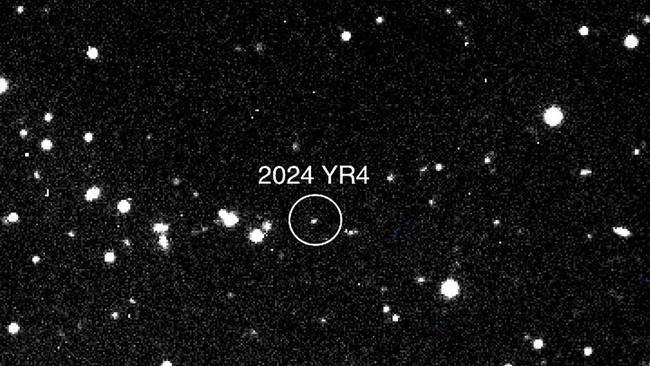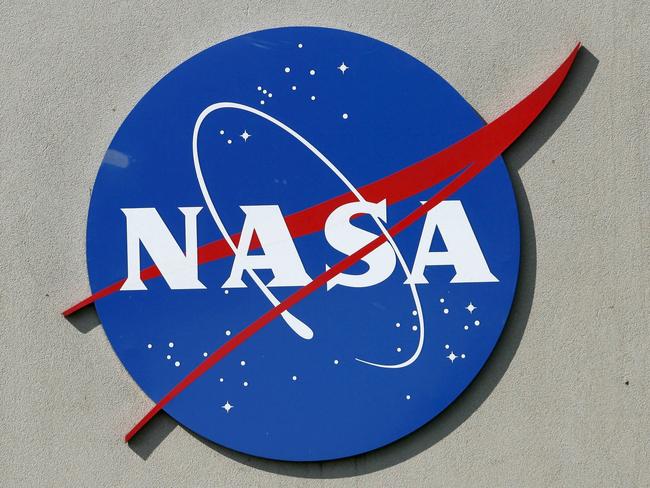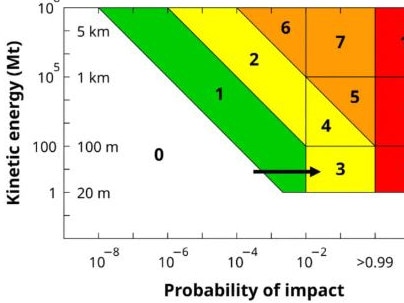‘Now’s the time’: NASA plotting how to destroy ‘city-killer’ asteroid which has 1.5 per cent chance of hitting Earth
As the asteroid heads toward Earth, one expert says “now’s the time to start planning,” warning “you can’t half-ass this at the last minute”.
Space
Don't miss out on the headlines from Space. Followed categories will be added to My News.
NASA is on high alert for a “city-killer” asteroid that’s headed toward Earth.
The asteroid, called 2024 YR4, now has a 1.5 per cent probability of hitting earth in 2032, according to NASA – and international agencies are feverishly working together to track the space rock and looking at how to blow it to smithereens if necessary, the New York Post reports.
“No one is panicking, but it’s definitely what we’re talking about in the hallways of NASA,” says a project manager at Kennedy Space Center.
“We know we have enough time to act, but now’s the time to start planning. You can’t half-ass this at the last minute.”

On Tuesday NASA put out a bombshell estimate that put the probability of deep impact at 3.1 per cent, or 1 in 32 — more likely than choosing a correct number on a roulette wheel. The space agency later upgraded Earth’s chances of missing the space rock with new observations on Wednesday.
YR4 is believed to be 130 to 300 feet wide — about the size of a large office building. Its projected trajectory could mean impact in eight of the world’s most populated cities — including Bogota, Colombia; Lagos, Nigeria; and Mumbai, India — with up to 110 million people potentially at risk for a strike if it hits Earth.
If it hit one of those cities, the consequences would be catastrophic.
“If you put it over Paris or London or New York, you basically wipe out the whole city and some of the environs,” Bruce Betts, chief scientist for the nonprofit Planetary Society, told AFP.

If world space agencies determine that the asteroid is likely to hit Earth, they could send a rocket armed with explosives towards the rock as it hurtles towards us in 2032, changing its trajectory or destroying it entirely.
“Destroying it would be easy,” says the NASA project manager. “It wouldn’t even take that much explosives. The trick is getting to it, and delivering the explosives precisely at the right time, at the right angle. That’s the hard part.”
The means to destroy the asteroid would be largely dependent on its density and makeup, which scientists don’t yet know. Some asteroids are made of porous rock and metal, causing them to disintegrate easily, like the one that exploded over Chelyabinsk, Russia in 2013. Those would take less explosives than other, more solid asteroids.
NASA has not commented on whether it would send a nuclear warhead or some other explosive counteract the asteroid — and experts caution that the talk may be premature, because we’re still very much in the wait-and-watch phase.
The NASA source said, “We’ll be able to track it until April, and then it’ll be too far away. But we can learn a lot in the next month or so, and figure out what to do from there.”
The Post confirms that NASA has been in contact with several space agencies, including the China National Space Administration (CNSA), the Russian space agency Roscosmos, and the European Space Agency (ESA).

The agencies are also in contact with astronomers from the International Asteroid Warning Network to map out the rock’s path — and ascertain the risks that it could slam into Earth at 38,000 miles per hour (61,200 km/hour).
Hundreds of telescopes are trained on the asteroid, which is currently hurtling away from us in an elliptical route that takes it closer to the Sun. It takes approximately 4 years for the rock to orbit the Sun.
YR4 was initially spotted rocketing through our solar system in December.
Astronomers at first believed that the asteroid had a 1 in 83 chance of hitting Earth during its return to earth in 2032.
The rock will return to earth’s vicinity in 2028, giving scientists another chance to recalculate the odds and determine if the rock is still threatening Earth.
Some scientists believe that the odds will drop dramatically upon its next orbit. At some point in the next months to few years, the probability will go to zero,” says Betts.
But NASA and the other agencies aren’t taking any chances.
“We have plenty of notice, and this is one to watch,” says the NASA project manager. “it could end up not being a danger at all. It could change in mass if there’s ice on it, and that would change things tremendously.
“It could wobble just a little bit now, and that slight change now could add up to tens of thousands of miles by the time it gets back this way. The sky isn’t falling — yet. Anything can happen. But we still have to stay on our guard.”
This article originally appeared in the New York Post and has been reproduced with permission.
More Coverage
Originally published as ‘Now’s the time’: NASA plotting how to destroy ‘city-killer’ asteroid which has 1.5 per cent chance of hitting Earth




